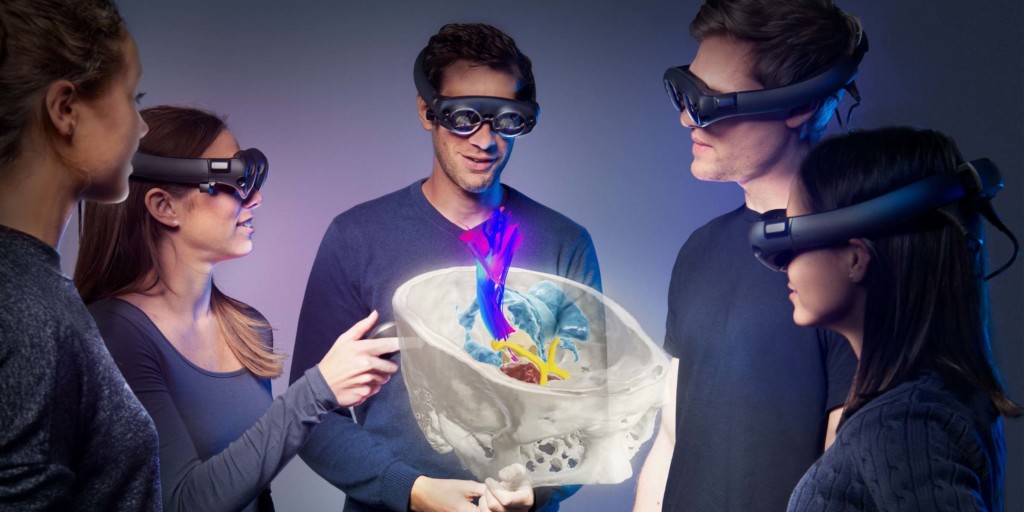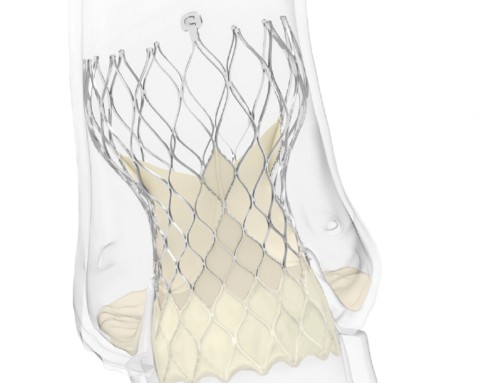
Mixed Reality Viewer
Brainlab has launched the Mixed Reality Viewer, which is designed to bring spatial computing into daily clinical practice for surgical plan review, medical student training and patient consultation. A press release reports that the Mixed Reality Viewer uses the head-mounted display Magic Leap One (from Brainlab strategic development partner Magic Leap) to add a new dimension to patient scans by freeing them from the screen. Up to four users can interact with the images in the room, walking around them to gain new perspectives on the patient’s specific anatomy.
The press release adds that the Brainlab Mixed Reality Viewer is CE labelled and is now available in Europe, with FDA clearance expected to follow later this year. Brainlab Mixed Reality Viewer is based on the company’s Elements 3D Viewer software, which is already in use in thousands of hospitals around the world. The system aims to provide high-fidelity, gaming-quality graphics that allow medical professionals to experience data as never before. With these case-specific hyper-realistic 3D visualisations, medical students can gain valuable knowledge and patients a better understanding of their specific anatomy and the planned surgical approach.
Users can place and interact with patient-specific 3D models in the room by resizing, scrolling through scan layers, and more. Collaboration mode allows multiple specialists to simultaneously view and move around that model, even remotely from anywhere in the hospital network. A virtual pointer facilitates discussion by allowing users to visually indicate anatomical areas critical to the case. Thanks to easy set-up, clinicians can start using the system immediately upon receipt.
Stefan Vilsmeier, president and CEO, Brainlab, says: “Mixed reality offers surgeons a completely new perspective on medical data. First we had the mouse before touchscreens revolutionised interaction with patient images. Now with mixed reality, users can walk around and dive inside these images created with the latest rendering technology used in gaming applications. This radical perspective change is just the first step in the next medical image visualisation revolution.”





